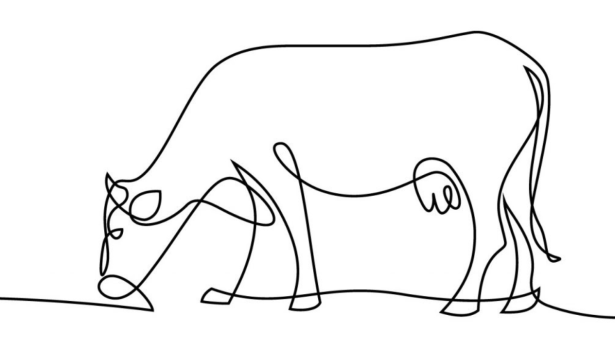Gruczolakorak trzustki psów i kotów
Streszczenie
Nowotwory trzustki psów i kotów występują rzadko. Najczęstszym nowotworem egzokrynowym trzustki jest gruczolakorak (łac. adenocarcinoma). Etiologia nowotworów części zewnątrzwydzielniczej trzustki, jak do tej pory, nie jest znana. Objawy kliniczne występujące przy gruczolakoraku trzustki psów i kotów są niespecyficzne. Rozpoznanie ww. nowotworów opiera się na USG i/lub tomografii komputerowej oraz ocenie cytologicznej materiału pobranego podczas BAC. Dotychczas nie opracowano jeszcze skutecznej metody leczenia gruczolakoraka trzustki u psów i kotów. W związku z tym obecnie leczeniem z wyboru jest chirurgiczne usunięcie nowotworowo zmienionej trzustki z odpowiednio szerokim marginesem zdrowej tkanki lub leczenie paliatywne, które ma poprawić komfort życia zwierzęcia.
Słowa kluczowe
trzustka, gruczolakorak, pies, kot
Abstract
Pancreatic tumors rarely occur in dogs and cats. The most common exocrine pancreatic tumor is adenocarcinoma. The etiology of exocrine tumors of the pancreas has not been yet established. Clinical symptoms are non-specific, and the diagnosis of the tumor is based on ultrasonography and/or CT and the cytological assessment of samples acquired during FNA biopsy. No effective treatment method has been developed so the treatment of choice is a surgical resection of the neoplastic pancreas tissue, with an appropriate margin of healthy tissue or palliative treatment aimed to improve the quality of life of the animal.
Keywords
pancreas, adenocarcinoma, dog, cat
Piśmiennictwo
- Bennett P.F., Hahn K.A., Toal R.L, Legendre A.M.: Ultrasonographic and cytopathological diagnosis of exocrine pancreatic carcinoma in the dog and cat. „J Am Anim Hosp Assoc”, 2001, 37: 466-473.
- Brooks D.G., Campbell K.L., Dennis J.S., Dunstan R.W.: Pancreatic paraneoplastic alopecia in three cats. „J Am Anim Hosp Assoc”, 1994, 30: 557-563.
- Brown P.J., Mason K.V., Merrett D.J., Mirchandani S., Miller R.I.: Multifocal necrotising steatites associated with pancreatic carcinoma in three dogs. „J Small Anim Pract”, 35: 129-132, 1994.
- Chan D.L.: Wspomaganie dietetyczne pacjentów w stanie ciężkim. „Waltham Focus”, 2006; Vol. 16; No 3: 9-16.
- Dobelbower R.R., Konski A.A., Merrick H.W., Bronn D.G., Schifeling D., Kamen C.: Intraoperative electron beam radiation therapy (IOEBRT) for carcinoma of the exocrine pancreas. „Int J Radiat Oncol Biol Phys”, 1991, 20: 113-119.
- Effron M., Griner L., Benischke K.: Nature and rate of neoplasia found in captive wild mammals, birds and reptiles at necropsy. „J Natl Cancer Inst”, 1997, 59: 185-198.
- Florizoone K.: A case of feline paraneoplastic alopecia associated with a pancreatic adenocarcinoma. „Vlaams Diergeneeskundig Tijdschrift”, 77: 23-25, 2008.
- Gear R.N., Bacon N.J., Langley-Hobbs S., Watson P.J., Woodger N., Herrtage M.E.: Panniculitis, polyarthritis and osteomyelitis associated with pancreatic neoplasia in two dogs. „J Small Anim Pract”, 2006, 47: 400-404.
- Godfrey D.R.: A case of feline paraneoplastic alopecia with secondary Malassezia-associated dermatitis. „J Small Anim Pract”, 1998, 39: 394-396.
- Hecht S., Henry G.: Sonographic evaluation of the normal and abnormal pancreas. „Clin Tech Small Anim Pract”, 2007, 22:115-121.
- Hecht S., Penninck D.G., Keating J.H.: Imaging findings in pancreatic neoplasia and nodular hyperplasia in 19 cats. „Vet Radiol Ultrasound”, 2007, 48: 45-50.
- Kamano T., Azuma N., Katami A., Tamura J., Sakakibara N., Matsumoto M., Mizumoto K., Kitazawa S., Konishi Y.: Preliminary observation on pancreatic duct adenocarcinoma induced by intraductal administration of N-ethyl-N′-nitro-N-nitrosoguanidine in dogs. „Jpn J Cancer Res”, 1988, 79: 1-4.
- Kipperman B.S., Nelson R.W., Griffey S.M., Feldman E.C.: Diabetes mellitus and exocrine neoplasia in two cats with hyperadrenocortism. „J Am Anim Hosp Assoc”, 1992, 28: 415-418.
- Kircher C.H, Nielsen S.W.: Tumours of the pancreas. „Bull World Health Organ”, 1992, 53: 195-202.
- Kubicka-Wołkowska J., Czyżykowski R., Dębska-Szmich S., Lisik-Habib M., potemski P.: Rak trzustki – rola leczenia systemowego i skojarzonego. „Onkologia w Praktyce Klinicznej”, 2014, 10 (3): 152-159.
- Mauldin E.A., Morris D.O., Goldschmidt M.H.: Retrospective study: the presence of Malassezia in feline skin biopsies. A clinicopathological study. „Vet Dermatol”, 2002, 13: 7-13.
- Moore A.S., Kitchell B.E.: New chemotherapy agents in veterinary medicine. „Vet Clin North Am Small Anim Pract”, 2003, 33: 629-649.
- Newman S.J., Mrkonjich L.: Cyclooxygenase-2 expression in feline pancreatic adenocarcinomas. „J Vet Diagn Invest”, 2006, 18: 590-593.
- Parker V.L, Freeman L.M.: Jak wprowadzić odżywianie dojelitowe do swojej praktyki. „Weterynaria po Dyplomie”, 2014; vol. 15; nr 2: 8-16.
- Pascal-Tenorio A., Olivry T., Gross T.L., Atlee B.A., Ihrke P.J.: Paraneoplastic alopecia associated with internal malignancies in the cat. „Vet Dermatol”, 1997, 8: 47-52.
- Quigley K.A., Jackson M.L., Haines D.M.: Hyperlipasemia in 6 dogs with pancreatic or hepatic neoplasia: evidence for tumor lipase production. „Vet Clin Pathol”, 2001, 30: 114-120.
- Rothwell T.L.W.: Retractile mesenteritis in a cats. „Vet Rec”, 1992, 130:492.
- Saker K.E., Remillard R.L: Critical Care Nutrition and Enteral Assisted Feeding. [W:] Hand M.S. et al.: Small Animal Clinical Nutrition. 5th ed, 2010; 440-476.
- Seaman R.L.: Exocrine pancreatic neoplasia in the cat: a case series. „J Am Anim Hosp Assoc”, 2004, 40: 283-245.
- Swann H.M., Sweet D.C., Michel K.: Compilation associated with use of jejunostomy tubes in dogs and cats: 40 cases (1989-1994). „J Am Vet Med Assoc”, 1997, 210: 1764-1767.
- Szewczyk A, Hanczakowska E: Właściwości i zastosowanie średniołańcuchowych kwasów tłuszczowych (MCFA) i ich monoacylgliceroli (MCM). „Wiadomości Zootechniczne”, 2010, 1: 21-26.
- Tasker S., Griffon D.J., Nuttall T.J., Hill P.B.: Resolution of paraneoplastic alopecia following surgical removal of a pancreatic carcinoma in a cat. „J Small Anim Pract”, 1999, 40:16-19.
- Turek M.M.: Cutaneous paraneoplastic syndromes in dgos and cats: a review of literature. „Vet Dermatol”, 2003, 14:279-296.
lek. wet. Estera Zawłocka-Hutny
Katedra Chorób Wewnętrznych z Kliniką Koni, Psów i Kotów
Wydział Medycyny Weterynaryjnej
Uniwersytet Przyrodniczy we Wrocławiu
50-366 Wrocław, pl. Grunwaldzki 47
Częścią artykułu „Gruczolakorak trzustki psów” i kotów jest
praktyczny algorytm postępowania przy gruczolakoraku u psów i kotów
Mogą zainteresować Cię również
Znajdź swoją kategorię
2843 praktycznych artykułów - 324 ekspertów - 23 kategorii tematycznych
Weterynaria w Terenie

Mykotoksyny – ukryty wróg w hodowli bydła mlecznego
Koszty Walka z mykotoksynami w stadzie bydła mlecznego jest nie tylko kwestią zdrowia zwierząt, ale także istotnym aspektem ekonomicznym. Analizy kosztów i korzyści pokazują, że inwestycja w kontrolę mykotoksyn może być wysoce opłacalna. Straty wynikające z obecności mykotoksyn, takie jak spadek produkcji mleka, zwiększone koszty weterynaryjne i przedwczesne brakowanie krów, mogą znacząco przewyższać koszty prewencji. […]

Kulawizna u bydła mlecznego (choroba Mortellaro). Skuteczne zwalczanie zapalenia skóry palca dzięki naturalnemu rozwiązaniu
Biodevas Laboratoires opracowała PIETIX – rozwiązanie w 100% naturalne, mające na celu zwalczenie zapalenia skóry palca u bydła mlecznego.

Czynniki wpływające na kolonizację mikrobiomu i dojrzałość układu pokarmowego prosiąt oraz jego prawidłowe funkcjonowanie
Piśmiennictwo dr inż. Piotr Nowak Facebook0Tweet0LinkedIn0

Opieka stomatologiczna nad starszymi końmi
Piśmiennictwo lek. wet. Katarzyna FerenzGabinet weterynaryjny Końskie Zdrowie we Wrocławiu Facebook0Tweet0LinkedIn0

Praktyka w terenie – jak zabezpieczyć się na wypadek stanów zagrożenia życia lub zdrowia zwierzęcia
Piśmiennictwo mec. Anna SłowińskaVox Poland Pomoc PrawnaSzczecin Facebook0Tweet0LinkedIn0

Wiek ma ogromne znaczenie podczas stawiania diagnozy
Lek. wet. Justyna Domagała tytuł inżyniera zootechniki uzyskała w 2016 r., a tytuł lekarza weterynarii – w 2019 r. na Uniwersytecie Przyrodniczym we Wrocławiu. Po studiach swoją wiedzę poszerzała podczas stażu w Szpitalu dla Koni Equivet, w którym później uzyskała zatrudnienie. W latach 2021-2024 swoją pracę skupiała na internistycznym leczeniu koni oraz pogłębianiu wiedzy na […]

Echa 32. Kongresu Bujatrycznego w Cancun
Profilaktyka Kongres był również okazją do zaprezentowania kilku przełomowych produktów immunologicznych, które mają szansę wprowadzić na nowe tory prewencję znanych od lat jednostek chorobowych, sprawiających wiele kłopotów z punktu widzenia odchowu cieląt czy rozrodu. Mowa tu konkretnie o trzech nowych szczepionkach mających zastosowanie w profilaktyce Mycoplasma bovis, Cryptosporidium parvum czy wirusowej biegunki bydła (BVD). Nie […]




























































